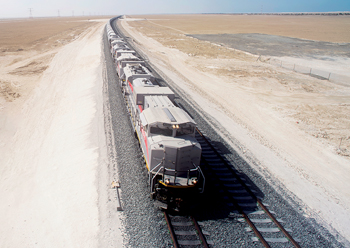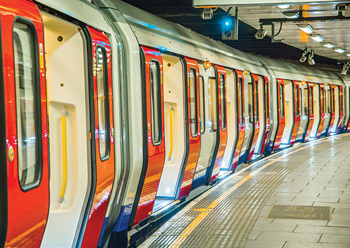
 SelTrac G8 includes advanced features that allow operators to manage network growth.
SelTrac G8 includes advanced features that allow operators to manage network growth.
Global technology leader Thales recently put the spotlight on its latest digital rail solutions aimed at improving efficiency of operations and creating an attractive environment for passengers, while targeting greener mobility.
These eco-responsible artificial intelligence (AI)-based systems will be instrumental in helping operators monitor social distancing and reduce density of passengers in stations and on-board trains, said senior officials of Thales at its first-ever digital event dedicated to rail transport, ‘Smart Mobility Experience’, held in March as well as at a press conference last month on Innovation in Rail Transport, “From rail modernization to rail digitalization” hosted by Amaury Jourdan, Vice President, Chief Technical Officer, Ground Transportation Systems.
Among the several new products and innovations highlighted at these events were the company’s Distributed Intelligent Video Analytics (Diva), and SelTrac G8 signalling system.
According to Thales, the digital solutions contribute to green mobility by reducing by up to 15 per cent of the carbon dioxide (CO2) emissions from metro and stations. Using digital technologies such as IoT, 5G, cloud and web IT, data analytics and AI, Thales has been designing innovative solutions such as digital signalling, train autonomy, mobile ticketing, passenger flow analytics, data-driven operation control, smart maintenance, which aim to drastically impact the way we travel.
 |
|
Diva provides guidance via platform displays that show which carriages of an approaching train are busy. |
Diva
Diva is the new Thales solution to monitor social distancing, and to guide passenger when the rail network is crowded. The solution helps alleviate crowding by reducing dwell times, and consequently enhances overall passenger safety, comfort, and travel experience.
Based on AI video analytics, Diva leverages the existing CCTV network on stations and on-board trains to provide real-time information on passenger density. The targeted performances of density accuracy are above 90 per cent, according to Millar Crawford, the Executive Vice President of Thales Ground Transportation Systems.
Thales brings its strengths in video analytics, AI and cybersecurity to the rail domain, with this new digital solution that enables effective crowd management at train stations and on-board trains.
Prior to the Covid-19 crisis, annual metro ridership globally was more than 62 billion – up 40 per cent in just seven years – and rising at a rate of more than five per cent a year. While Covid-19 has reversed this trend, it has brought the dangers of crowding into sharp focus. The immediate need is to enable social distancing and prevent crowds from developing.
Thales’ Diva uses existing CCTV cameras – on platforms and trains – to measure crowd density. No additional sensors are required, the company points out. Passenger density is calculated in real time using video analytics and passenger guidance can be provided via platform displays that show which carriages of an approaching train are busy and which are not with three levels of density - red, yellow and green colour coding is used to indicate density.
Meanwhile, heat maps of stations and trains can be used in the operations control centre (OCC) to monitor passenger movements across the entire system.
Video analytics can also be used for many other transportation use cases, among them the detection of unattended luggage and trespassing on platforms, and whether there are still passengers onboard when the train reaches the end of the line.
This system has already been implemented as a pilot in Singapore with SBS Transit in 2020.
SelTrac
SelTrac Generation 8 (G8) is the latest evolution of Thales’ world-leading communications-based train control (CBTC) solution for urban, metro and light rail networks. The main benefits of the system include flexibility and evolution capabilities, relying on the latest technologies to significantly reduce installation and lifecycle costs, while maintaining passenger safety.
The global pandemic has emphasised the need of strong and reliable public transport. Rail operators face many challenges including keeping pace with rapidly evolving technology: while a signalling system may have a lifespan of 30 years or more, the hardware and software on it can become obsolete much more quickly. They also need ways to manage the lifecycle of their systems.
Thales’ SelTrac G8 is designed to alleviate these issues. It includes a set of advanced features that allow public transport operators to manage network growth, extensions, and fleet expansions as well as prepare for the future and control operations.
SelTrac G8 has a new digital architecture with flexible options designed to minimise the amount of trackside equipment required. It brings enhanced services to support operators to achieve 100 per cent availability and on time service. Services capabilities including: health monitoring features for leaner maintenance teams and faster response capability, increased resiliency to failure with greater visibility of seamless hardware and software enhancements to extend the system life with no interruption to operations.
Among other improvements, the SelTrac G8 platform is autonomy ready. One of the autonomous capabilities is designed to make both greenfield and brownfield CBTC deployments faster and easier than ever, with rapid train conversion and minimal trackside equipment.





















_0001.jpg)


.jpg)
















.jpg)








.jpg)



